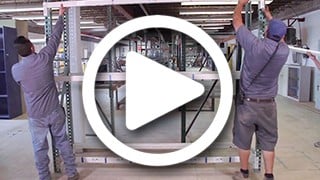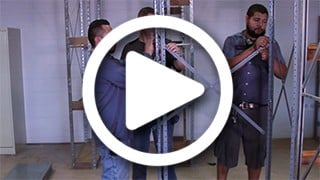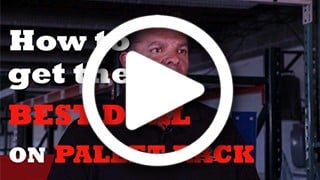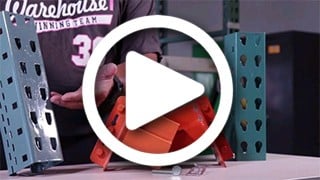Are You Inspecting Your Rack Regularly?
If you work in a warehouse, you’ve probably seen your share of pallet racks in various conditions. For your own safety, and the quality of work and inventory in your warehouse, employees should be trained to do rack inspections as well. Depending on the size of your business, your warehouse should have at least one employee trained to inspect racks at all times.
What Rack Inspectors Should Check
Rack inspections aren’t complicated, but they do contain several elements. First, inspectors should make sure all racks are plumb and level. Frequently, accidents and injuries occur because of poor or unlevel installation. Crookedness and misaligned rows of pallets are the most obvious signs of a plumb problem. Sometimes, the floor is uneven or the warehouse has a foundation issue. Both of these problems can impact racks, pallets, and the integrity of shelving.
Additionally, make sure your rack doesn’t have too many shims; these can negatively alter the rack’s weight. Next, racks should be inspected for rust, corrosion, and structural weakness. Even the smallest rust spot can result in collisions between racks. This, in turn, results in lost inventory and possible injuries. These collisions can destroy racks, which means you will spend valuable time and money replacing them.
Don’t wait for rust spots to appear – look for scraped paint and listen for creaking or squeaking. These are both indications the metal may be weak. Braces, footplates, and column protectors should be checked separately for damage. No part of the rack should be bent or twisted, and footplates should be securely attached to the bottom of the rack and the floor. Footplates should be properly tagged. Rust, scraped paint, and odd angles on column protectors are additional red flags, even if it looks insignificant.
If any part of the rack is damaged, immediately stop using it and seek professional advice from Warehouse1.
Loading Beam Issues
Sometimes the rack itself looks okay, but the loading beams are damaged or missing parts. Bolts, clips, and attachment pins should never be missing, and the beams should not bow under heavy loads. Slight deflection is okay, but consistent bowing means your loads are too heavy and could damage the rack. Loading beams should not be twisted or dented, and beams should never bow more than 1/180 of their total length.
This information is designed to help you consistently maintain your own equipment; however, it is important to ensure proper function and rack inspection today by contacting Warehouse1.



